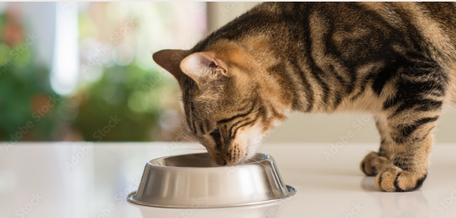Be your dog's hero!
Switching to a raw food diet for our dogs is what ultimately led to us starting BJ's Raw Pet Food. It transformed our pup’s mealtime from dull to delicious. It not only transformed the lives of our dogs, but for countless of our pupstomers around the country.
Check out this 5-star Google Review from Laree S.
"My dog was a picky eater and suffered from stomach issues. Adding a raw diet has completely changed him. If you're looking for a great company and change to your dogs diet give them a try."
If you’re searching for ways to boost your dog’s health and get your pup excited about food again, we think a raw diet IS the answer! Check out our amazing raw dog food options here!
When it's mealtime on the farm, our dogs (Trixie, Lilac, Ginger and Bella) can't stop wagging their tails in excitement. We want to share why a raw food diet has been a game-changer, along with practical tips to make the switch for your dog (or cat).

What Is a Raw Food Diet for Dogs?
A raw food diet, often called BARF (Biologically Appropriate Raw Food), mimics what dogs’ wild ancestors ate: raw meat, bones, organs, and small amounts of vegetables or fruits. Dr Ian Billinghurst is recognized as the “Father” of “RAW” and the founder of the BARF. Unlike processed kibble, raw dog food is minimally processed, retaining natural nutrients that support canine health. Benefits include improved digestion, shinier coats, and increased energy—exactly what we noticed with our dogs.
Why We Switched to Raw Dog Food
Our dog Ginger used to approach her kibble with zero excitement, usually eating only half of her bowl. We became concerned not only about her lackluster appetite, but her overall health. We researched raw dog food benefits and quickly become obsessed. Studies and vet advice pointed to better nutrient absorption, healthier skin, and even cleaner teeth. After exploring various possibilities and consulting with our vet, we decided to try a raw food diet for all four of our dogs. This transformed our dog's lives.
How to Transition Your Dog to a Raw Food Diet
Switching to raw food requires care to avoid digestive upset. Here’s how we made the transition smooth for our pups:
-
Gradual Introduction: Over two weeks, we mixed increasing amounts of raw food with kibble. Starting with 25% raw food ensured his stomach adjusted.
-
Balanced Meals: We use our very own raw food, premium food that nourishes with a complete and balanced blend to promote and improve your dog’s health. Wholesome, all-natural ingredients like freshly-ground whole chicken, beef, pork, wild-caught Alaskan salmon, bone, spleen, liver, kidney, and veggies.
-
Monitor Progress: Ginger's first experience with raw food was a hit—her tail hasn’t stopped wagging since.
Sample Raw Dog Food Meal Plan
-
Protein: 60-70% raw ground beef or chicken
-
Organs: 10% liver or kidney
-
Vegetables: 10-15% mashed carrots or spinach
-
Supplements: Fish oil, calcium (if no bones are included)

Why Dogs Love Raw Food Diets
Now Ginger, and the other three farm dogs absolutely love mealtime! Here’s why a raw food diet for dogs works:
-
Irresistible Flavor: Fresh, unprocessed meat and bones are naturally appealing.
-
Taps Into Instincts: Dogs are carnivores, and raw food satisfies their natural urge to chew and tear.
-
Health Boost: Since switching, Ginger boasts a glossier coat, steadier energy, and better digestion. Her vet even noted cleaner teeth, reducing the need for dental cleanings.
Proven Benefits of Raw Dog Food
-
Improved Coat and Skin: Omega-3s and natural fats promote a shiny coat.
-
Better Digestion: Raw food is easier for many dogs to digest, reducing bloating or upset stomachs.
-
Increased Energy: Balanced nutrients keep dogs active and alert.
-
Dental Health: Chewing raw bones naturally cleans teeth.
Challenges of a Raw Dog Food Diet
While the benefits are clear, a raw food diet for dogs has challenges:
-
Cost: Raw food can be pricier than kibble, though bulk buying with us helps!
-
Preparation: It requires time to research, find what's best for your dog and prepping the food is a lot more time consuming than kibbles.
-
Safety: Raw meat demands strict hygiene—clean bowls thoroughly and store food properly to avoid contamination.
Tips for Success with Raw Dog Food
-
Start Slow: Gradually introduce raw food to prevent digestive issues.
-
Consult a Vet: Ensure the diet meets your dog’s nutritional needs.
-
Source Smart: Choose a reputable source, we would love to be that raw dog food of choice for you!
-
Stay Hygienic: Treat raw dog food like human-grade raw meat—refrigerate promptly and sanitize surfaces.
-
Portion Control: Avoid overfeeding by calculating portions based on your dog’s weight and activity level. Check out our Feeding Calculator here for help!
Why Mealtime Is Now a Highlight For Our Pups
Our pups now race to their bowls at mealtime, tails in constant wagging, tongues wagging for raw dog food. It's not just about taste—it’s about a healthy and happy pup. The increased health of our dogs by switching to raw has made the extra effort worthwhile.
If your dog seems bored with meals or you’re exploring natural dog food diets, consider raw food. Every dog is unique, so consult your vet to see if it’s right for your pup. For us, the switch to a raw food diet for dogs has turned mealtime into a daily celebration.
Have you tried a raw food diet for your dog? Share your tips or experiences in the comments—I’d love to hear how it’s working for you!
Ready to learn more? We would love to help! Reach out to us today to to start your dog’s journey to healthier, happier mealtimes.




















